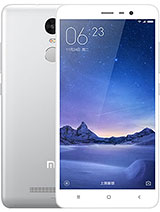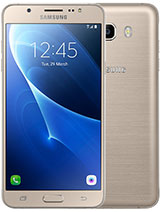Compare
Specifications
Xiaomi Redmi Note 3 |
Samsung Galaxy J7 (2016) |
|
|
Full
Differences
Change compare mode
|

|

|
Xiaomi Redmi Note 3 |
Samsung Galaxy J7 (2016) |
| Network | ||
|---|---|---|
| Technology | GSM / HSPA / LTE | GSM / HSPA / LTE |
| 2G bands | GSM 850 / 900 / 1800 / 1900 - SIM 1 & SIM 2 | GSM 850 / 900 / 1800 / 1900 - SIM 1 & SIM 2 (dual-SIM model only) |
| 3G Network | HSDPA 850 / 900 / 1700(AWS) / 1900 / 2100 - Global | HSDPA 850 / 900 / 1900 / 2100 |
| HSDPA 850 / 900 / 1900 / 2100 - Special edition (Taiwan) | ||
| 4G Network | 1, 3, 5, 7, 8, 38, 39, 40, 41 - Global | 1, 3, 5, 7, 8, 20, 40 |
| 1, 2, 3, 4, 5, 7, 8, 20, 28, 40 - Special edition (Taiwan) | ||
| Speed | HSPA 42.2/5.76 Mbps, LTE Cat6 300/50 Mbps | HSPA, LTE Cat4 150/50 Mbps |
| Launch | ||
|---|---|---|
| Announced | 2016, January 14. Released 2016, March 03 | 2016, March 29. Released 2016, April |
| Status | Discontinued | Discontinued |
| Body | ||
|---|---|---|
| Dimensions | 150 x 76 x 8.7 mm (5.91 x 2.99 x 0.34 in) | 151.7 x 76 x 7.8 mm (5.97 x 2.99 x 0.31 in) |
| 3D size compare | ||
| Weight | 164 g (5.78 oz) | 170 g (6.00 oz) |
| Build | Glass front, aluminum back, aluminum frame | Glass front, plastic back, aluminum frame |
| SIM | Hybrid Dual SIM (Micro-SIM/Nano-SIM, dual stand-by) | Single SIM (Micro-SIM) or Dual SIM (Micro-SIM, dual stand-by) |
| Display | ||
|---|---|---|
| Type | IPS LCD | Super AMOLED |
| Size | 5.5 inches, 82.6 cm2 (~72.4% screen-to-body ratio) | 5.5 inches, 83.4 cm2 (~72.3% screen-to-body ratio) |
| Resolution | 1080 x 1920 pixels, 16:9 ratio (~403 ppi density) | 720 x 1280 pixels, 16:9 ratio (~267 ppi density) |
| Platform | ||
|---|---|---|
| OS | Android 5.1.1 (Lollipop), upgradable to 6.0.1 (Marshmallow), MIUI 9.5 | Android 6.0.1 (Marshmallow), upgradable to Android 8.1 (Oreo) |
| Chipset | Qualcomm MSM8956 Snapdragon 650 | Qualcomm MSM8952 Snapdragon 617 (28 nm) Exynos 7870 Octa (14 nm) |
| CPU | Hexa-core (4x1.4 GHz Cortex-A53 & 2x1.8 GHz Cortex-A72) | Octa-core (4x1.6 GHz Cortex-A53 & 4x1.0 GHz Cortex-A53) Octa-core 1.6 GHz Cortex-A53 |
| GPU | Adreno 510 | Adreno 405 Mali-T830 MP1 |
| Memory | ||
|---|---|---|
| Card slot | microSDXC (uses shared SIM slot) | microSDXC (dedicated slot) |
| Internal | 16GB 2GB RAM (Standard version), 32GB 3GB RAM (High/Special version) | 16GB 2GB RAM |
| eMMC 4.5 | eMMC 5.1 | |
| Main Camera | ||
|---|---|---|
| Modules | 16 MP, f/2.0, PDAF | 13 MP, f/1.9, 28mm (wide), AF |
| Features | Dual-LED dual-tone flash, HDR, panorama | LED flash, panorama, HDR |
| Video | 1080p@30fps | 1080p@30fps |
| Selfie Camera | ||
|---|---|---|
| Modules | 5 MP, f/2.0 | 5 MP, f/1.9 |
| Features | LED flash | |
| Video | 1080p@30fps | |
ADVERTISEMENT
| Sound | ||
|---|---|---|
| Loudspeaker | Yes | Yes |
| 3.5mm jack | Yes | Yes |
| 24-bit/192kHz audio |
||
| Comms | ||
|---|---|---|
| WLAN | Wi-Fi 802.11 a/b/g/n/ac, dual-band, Wi-Fi Direct, hotspot | Wi-Fi 802.11 b/g/n, Wi-Fi Direct |
| Bluetooth | 4.1, A2DP, LE | 4.1, A2DP |
| Positioning | GPS, GLONASS, BDS | GPS, GLONASS, BDS |
| NFC | No | Yes (market dependent for dual-SIM model) |
| Infrared port | Yes | No |
| Radio | Stereo FM radio, recording | FM radio, RDS, recording |
| USB | microUSB 2.0, OTG | microUSB 2.0, OTG |
| Features | ||
|---|---|---|
| Sensors | Fingerprint (rear-mounted), accelerometer, gyro, proximity, compass | Accelerometer, proximity |
| ANT+ | ||
| Battery | ||
|---|---|---|
| Type | Li-Po 4050 mAh, non-removable | Li-Ion 3300 mAh, removable |
| Charging | 10W wired | |
| Talk time | Up to 23 h (3G) | |
| Music play | Up to 96 h | |
| Misc | ||
|---|---|---|
| Colors | Silver, Gray, Gold | White, Black, Gold, Rose Gold | SAR | 0.49 W/kg (head) 0.50 W/kg (body) | 1.10 W/kg (head) 1.01 W/kg (body) |
| SAR EU | 0.56 W/kg (head) | 0.35 W/kg (head) 1.39 W/kg (body) |
| Models | 2015116, 2015161 | SM-J710FN, SM-J710F, SM-J710H, SM-J710M, SM-J710GN, SM-J710MN, SM-J710K, SM-J7108, SM-J710FQ |
| Price | About 160 EUR | About 230 EUR |
| Tests | ||
|---|---|---|
| Performance | Basemark OS II 2.0: 1426Basemark X: 14717 | Basemark OS II 2.0: 1007Basemark X: 11199 |
| Display | Contrast ratio: 953:1 (nominal), 2.249 (sunlight) | Contrast ratio: Infinite (nominal), 3.902 (sunlight) |
| Camera | Compare PHOTO / Compare VIDEO | |
| Loudspeaker | Voice 66dB / Noise 66dB / Ring 75dB | Voice 64dB / Noise 71dB / Ring 68dB |
| Audio quality | Noise -96.0dB / Crosstalk -95.6dB | Noise -92.4dB / Crosstalk -92.3dB |
| Battery (old) | Endurance rating 93h | Endurance rating 101h |